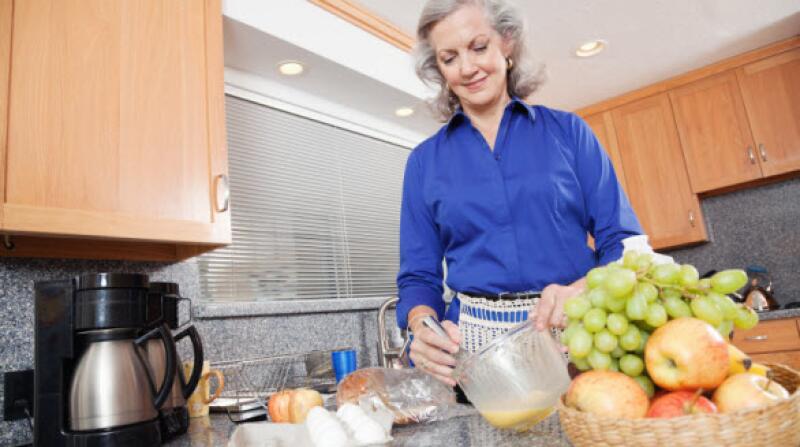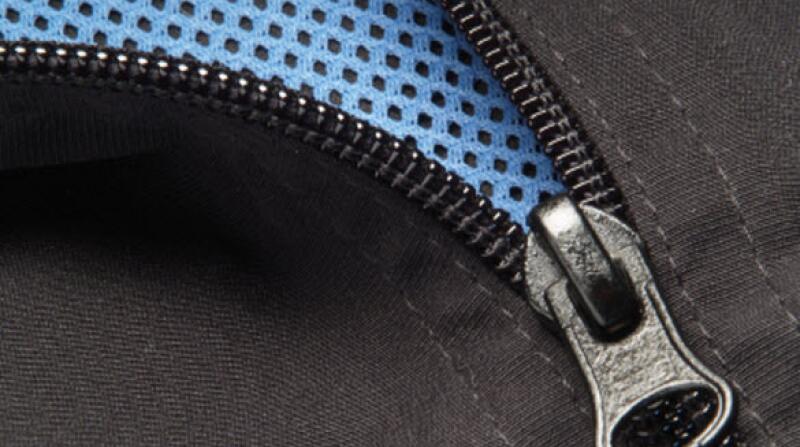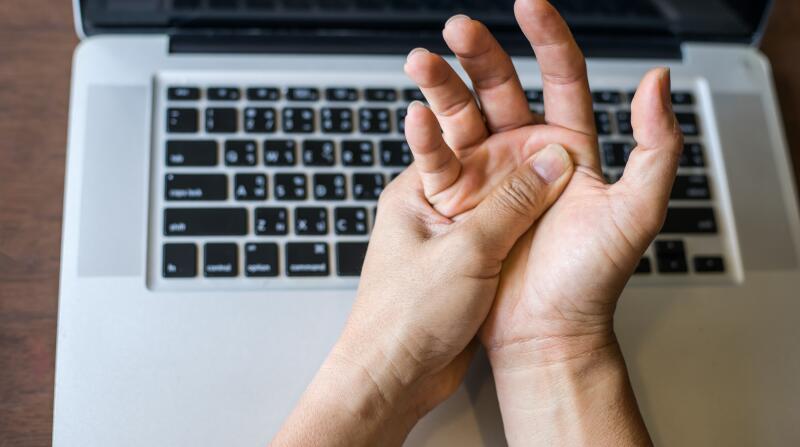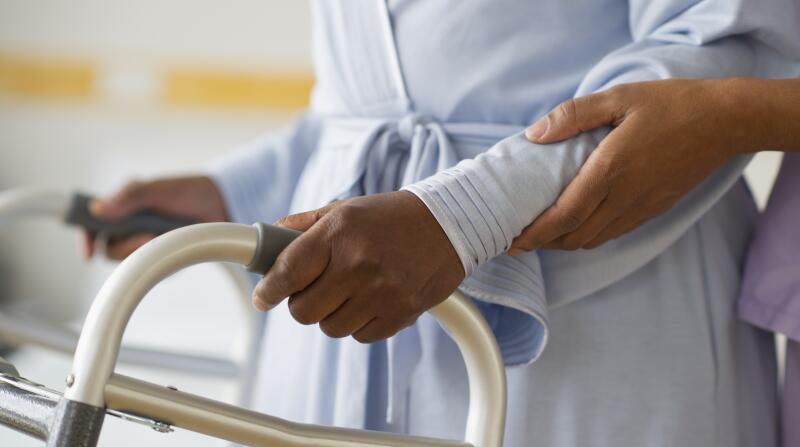10 Types of Assistive Devices for Parkinson's Disease

Medically Reviewed By William C. Lloyd III, MD, FACS
Written By Linda Wasmer Andrews on August 17, 2021
-
 Your Parkinson's ToolkitWhen you have Parkinson's disease (PD), symptoms such as shakiness, rigid muscles, slow movements, and unsteadiness can affect your daily life. As the disease progresses, it can turn routine tasks—such as eating, dressing, and writing—into daunting chores. Assistive devices make these tasks easier so you're able to do more.
Your Parkinson's ToolkitWhen you have Parkinson's disease (PD), symptoms such as shakiness, rigid muscles, slow movements, and unsteadiness can affect your daily life. As the disease progresses, it can turn routine tasks—such as eating, dressing, and writing—into daunting chores. Assistive devices make these tasks easier so you're able to do more. -
 1. Cooking ToolsPD itself or medication side effects can cause trembling, twisting, or writhing movements that turn the kitchen into a danger zone. Rocker knives, which have rounded blades used in a rocking motion, can make cutting safer. Electric models of can openers, vegetable peelers, and scissors may be easier to use than manual ones.
1. Cooking ToolsPD itself or medication side effects can cause trembling, twisting, or writhing movements that turn the kitchen into a danger zone. Rocker knives, which have rounded blades used in a rocking motion, can make cutting safer. Electric models of can openers, vegetable peelers, and scissors may be easier to use than manual ones. -
-
 2. Eating UtensilsA travel mug with a lid and attached straw helps prevent drink spills, and a nonskid mat under your plate helps hold it securely in place. Utensils with oversized or angled handles may be easier to use, and a scoop plate with a rim on one side can keep food from sliding off.
2. Eating UtensilsA travel mug with a lid and attached straw helps prevent drink spills, and a nonskid mat under your plate helps hold it securely in place. Utensils with oversized or angled handles may be easier to use, and a scoop plate with a rim on one side can keep food from sliding off. -
 3. Bathroom AidsBathroom aids can make this essential room safer and more accessible. Examples include a shower chair, grab bars, and a nonskid bath mat. It requires an investment by the homeowner but it greatly increases safety for those dealing with PD. If shaky hands make grooming tricky, an electric toothbrush, electric razor, or hands-free hair dryer mounted on the vanity may help.
3. Bathroom AidsBathroom aids can make this essential room safer and more accessible. Examples include a shower chair, grab bars, and a nonskid bath mat. It requires an investment by the homeowner but it greatly increases safety for those dealing with PD. If shaky hands make grooming tricky, an electric toothbrush, electric razor, or hands-free hair dryer mounted on the vanity may help. -
 4. Dressing ToolsClothing fasteners, such as buttonhooks and zipper pulls, can help you dress with success. Lightweight, supportive shoes with Velcro tabs or elastic shoelaces are easier to put on. Around the house, socks with nonslip soles may stay on your feet better than traditional slippers.
4. Dressing ToolsClothing fasteners, such as buttonhooks and zipper pulls, can help you dress with success. Lightweight, supportive shoes with Velcro tabs or elastic shoelaces are easier to put on. Around the house, socks with nonslip soles may stay on your feet better than traditional slippers. -
 5. Bedroom AidsIn bed, a blanket support—a frame that holds the weight of the blanket off your feet—makes it easier to move freely. An assist handle—a sturdy handle that attaches to the bedside—helps you pull yourself upright. When you get up at night, a motion-activated nightlight is handy.
5. Bedroom AidsIn bed, a blanket support—a frame that holds the weight of the blanket off your feet—makes it easier to move freely. An assist handle—a sturdy handle that attaches to the bedside—helps you pull yourself upright. When you get up at night, a motion-activated nightlight is handy. -
-
 6. Writing ToolsA common symptom of PD is handwriting that becomes small, cramped, and laborious. A pen grip—a rubber or foam cylinder that fits over your pen—may help your hand stay more relaxed as you write. Also, a ballpoint pen is often easier to control than a felt-tip or rollerball.
6. Writing ToolsA common symptom of PD is handwriting that becomes small, cramped, and laborious. A pen grip—a rubber or foam cylinder that fits over your pen—may help your hand stay more relaxed as you write. Also, a ballpoint pen is often easier to control than a felt-tip or rollerball. -
 7. Computer GearIf typing on a computer keyboard or using a mouse becomes difficult, several options are available. Specially-designed keyboards with large keys reduce mistakes. You might type using a keyguard—a plastic overlay with holes that isolate each key. Or you might use an alternative to a mouse, such as a touchpad, joystick, or trackball.
7. Computer GearIf typing on a computer keyboard or using a mouse becomes difficult, several options are available. Specially-designed keyboards with large keys reduce mistakes. You might type using a keyguard—a plastic overlay with holes that isolate each key. Or you might use an alternative to a mouse, such as a touchpad, joystick, or trackball. -
 8. Voice DevicesVoice changes are common in PD. If your voice is very soft, a personal voice amplifier may help, particularly in social situations where several people are talking against background noise. There are also telephone amplifiers to increase the volume of your voice on the phone.
8. Voice DevicesVoice changes are common in PD. If your voice is very soft, a personal voice amplifier may help, particularly in social situations where several people are talking against background noise. There are also telephone amplifiers to increase the volume of your voice on the phone. -
 9. Walking AidsPD often leads to a shuffling gait and impaired balance. A cane or a wheeled walker may improve your ability to get around. If you freeze up when walking, a laser cane or walker can beam a line across your path. This visual cue may help break freezing episodes.
9. Walking AidsPD often leads to a shuffling gait and impaired balance. A cane or a wheeled walker may improve your ability to get around. If you freeze up when walking, a laser cane or walker can beam a line across your path. This visual cue may help break freezing episodes. -
 10. Organizing ToolsIn some cases, PD may affect your memory. A pillbox with compartments for organizing your pills and an alarm to remind you to take them can help. The calendar function on a smartphone can alert you to appointments. The memo function is convenient for grocery and to-do lists.
10. Organizing ToolsIn some cases, PD may affect your memory. A pillbox with compartments for organizing your pills and an alarm to remind you to take them can help. The calendar function on a smartphone can alert you to appointments. The memo function is convenient for grocery and to-do lists.
10 Types of Assistive Devices for Parkinson's Disease
























